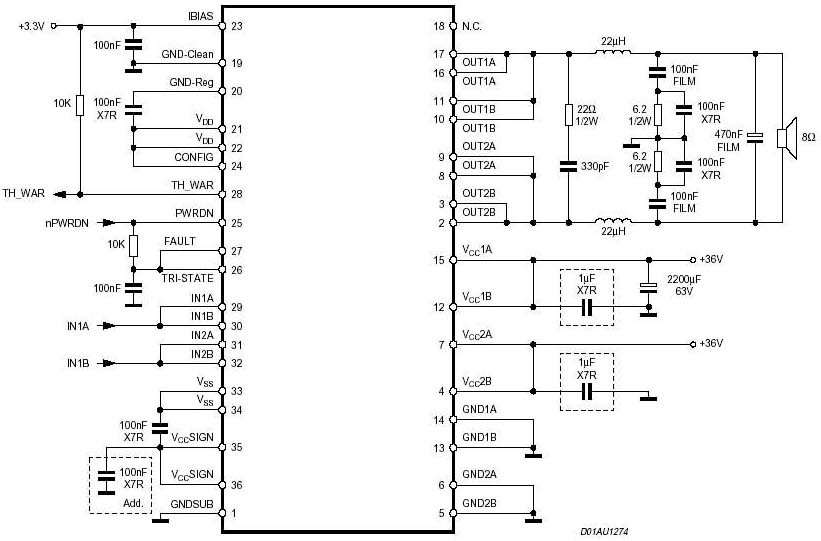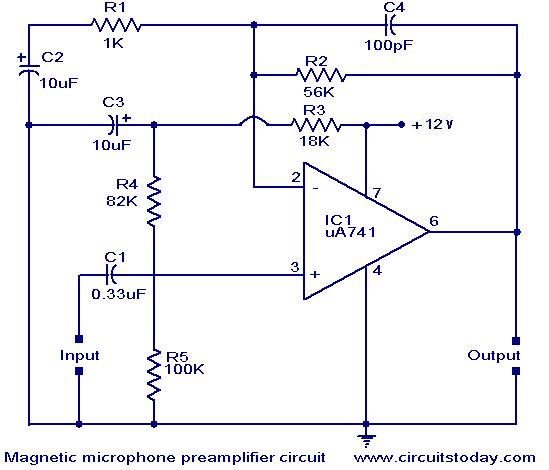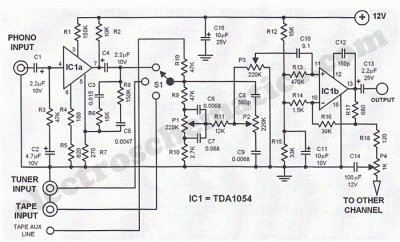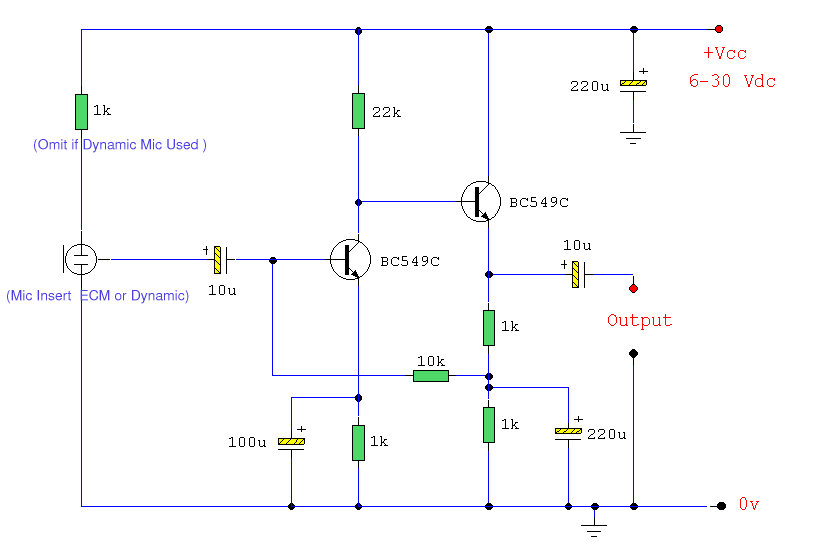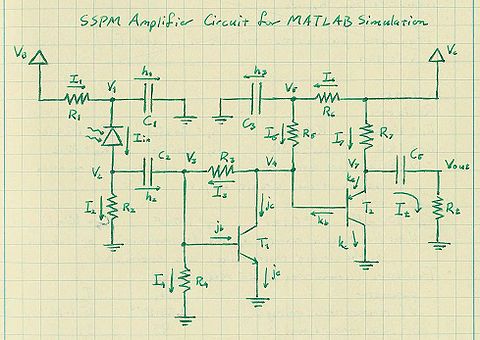
135-175Mhz amplifier
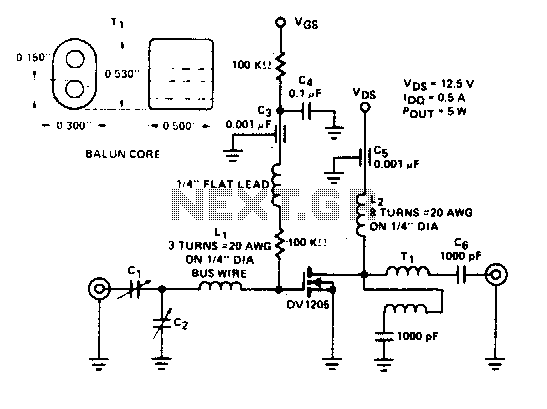
Cl. C2 ARCO #462, 2 to 60 pF, trimmer capacitors Li, 3 turns of #20 AWG wire on 1/4" diameter L2, β turns of #20 AWG on 1/4" diameter Ti. Additionally, there is 1 turn of 25 Ω coax on 2 balun cores.
The circuit utilizes ARCO #462 trimmer capacitors, which provide a capacitance range of 2 to 60 picofarads (pF). These capacitors are essential for fine-tuning frequency responses in RF applications. The capacitors are denoted as C2 in the schematic, indicating their specific role in the circuit.
The inductors, represented as L1 and L2, are constructed using #20 AWG wire. L1 features three turns of wire wound around a 1/4-inch diameter form, which contributes to its inductive properties. The choice of wire gauge and the number of turns are critical parameters that influence the inductance value, affecting the overall circuit performance.
L2 is similarly wound with the same gauge wire, but the exact number of turns is represented as β, indicating a variable or unspecified number of turns based on the design requirements. The diameter of the inductor forms is consistent, ensuring uniformity in the inductive behavior across the circuit.
Additionally, the circuit includes a 25 Ω coaxial cable wound in a single turn around two balun cores. This configuration is likely employed to facilitate impedance matching and signal transformation between different circuit sections, optimizing power transfer and minimizing signal loss. The use of coaxial cable is advantageous for reducing electromagnetic interference (EMI) and maintaining signal integrity in high-frequency applications.
Overall, this circuit design incorporates essential RF components, including trimmer capacitors and inductors, to achieve precise tuning and effective signal management in its intended application.Cl. C2 ARCO #462,2 to 60 pF, trimmer capacitors Li, 3 turns byss wire #20 AWG on 1/4" diameter L2, ß turns *20 AWG on 114" diameter Ti 1 turn of 25 O coax on 2 balun cores.
The circuit utilizes ARCO #462 trimmer capacitors, which provide a capacitance range of 2 to 60 picofarads (pF). These capacitors are essential for fine-tuning frequency responses in RF applications. The capacitors are denoted as C2 in the schematic, indicating their specific role in the circuit.
The inductors, represented as L1 and L2, are constructed using #20 AWG wire. L1 features three turns of wire wound around a 1/4-inch diameter form, which contributes to its inductive properties. The choice of wire gauge and the number of turns are critical parameters that influence the inductance value, affecting the overall circuit performance.
L2 is similarly wound with the same gauge wire, but the exact number of turns is represented as β, indicating a variable or unspecified number of turns based on the design requirements. The diameter of the inductor forms is consistent, ensuring uniformity in the inductive behavior across the circuit.
Additionally, the circuit includes a 25 Ω coaxial cable wound in a single turn around two balun cores. This configuration is likely employed to facilitate impedance matching and signal transformation between different circuit sections, optimizing power transfer and minimizing signal loss. The use of coaxial cable is advantageous for reducing electromagnetic interference (EMI) and maintaining signal integrity in high-frequency applications.
Overall, this circuit design incorporates essential RF components, including trimmer capacitors and inductors, to achieve precise tuning and effective signal management in its intended application.Cl. C2 ARCO #462,2 to 60 pF, trimmer capacitors Li, 3 turns byss wire #20 AWG on 1/4" diameter L2, ß turns *20 AWG on 114" diameter Ti 1 turn of 25 O coax on 2 balun cores.
